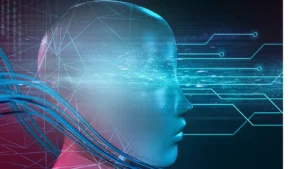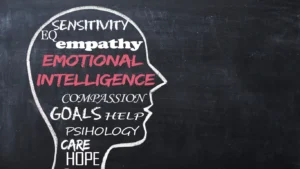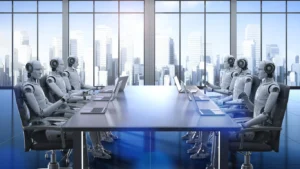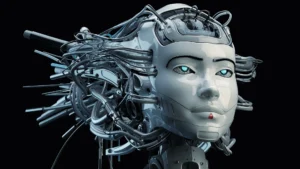Future AI’s Culinary Desires: A Deep Dive To Satisfy Flavorful Digital Taste Buds in 2023
In a world driven by technological advancements, artificial intelligence (AI) has become an integral part of our daily lives. From self-driving cars to voice assistants, AI systems continue to evolve, mirroring human intelligence more closely than ever before. But could the future hold a surprising twist?
Could Future AI crave a favorite food?

Is Future AI capable of experiencing hunger or developing preferences for specific culinary delights? At this juncture, the answer is negative, but a group of researchers from Penn State University is pioneering a groundbreaking electronic tongue that emulates how taste factors into our dietary choices, taking into account both physiological necessities and personal cravings. This innovation potentially offers a blueprint for imbuing AI with a more human-like information processing capability.
Artificial Intelligence vs Human Intelligence

Artificial intelligence has come a long way since its inception. Initially designed to perform specific tasks and follow programmed algorithms, modern AI systems utilize machine learning and neural networks to adapt and learn from their experiences. This evolution has brought us closer to creating AI that not only mimics human intelligence but also showcases a degree of autonomy.
Human conduct is a multifaceted interplay between our physiological demands and psychological inclinations, a nebulous and intricate amalgamation. Despite remarkable advancements in AI, the emotional aspect of human intelligence remains largely overlooked. Emotional intelligence, for instance, is rarely incorporated into AI frameworks. AI systems are being designed with the ability to recognize and respond to human emotions.
Understanding Cravings in Humans

Before we delve into the possibility of future AI experiencing cravings, let’s first understand what cravings are in humans. Cravings are intense desires for specific foods, often driven by various factors such as emotions, memories, and even physiological needs. They can vary from person to person and can be influenced by a wide range of external stimuli.
Saptarshi Das, an associate professor of engineering science and mechanics at Penn State and the corresponding author of a recent study published in Nature Communications, emphasized the primary focus of their research on infusing emotional intelligence into AI. He explained that while emotion is a broad and extensively studied field in psychology, Computer Engineers rely on mathematical models and diverse datasets for design purposes. Human behavior is relatively easy to observe but challenging to quantify, making it arduous to replicate and bestow emotional intelligence upon a robot.
AI and the Concept of Cravings
To comprehend the idea of future AI having a favorite food, we need to consider the cognitive capabilities and learning mechanisms of AI systems. As AI becomes more sophisticated, it gains the ability to process vast amounts of data and draw insights from it. This includes understanding human behavior and preferences, including food choices.
Das noted that our dietary preferences are a prime example of emotional intelligence and the intricate interplay between our physiological and psychological states. What we choose to eat is profoundly influenced by the process of gustation, which entails our sense of taste guiding our dietary decisions based on flavor preferences. This differs from the physiological act of eating out of hunger.
Learning from Data Analysis
One of the key ways future AI systems learn is through data analysis. They can analyze vast datasets of human behavior, including food preferences, and derive patterns and trends from this information. This enables AI to make predictions and recommendations, similar to how a human might develop a preference for a certain dish over time.
“If you are fortunate enough to have an array of food options at your disposal, you are more likely to select those dishes that align with your taste preferences,” Das explained. “You won’t opt for something exceptionally bitter; instead, you’ll gravitate towards sweeter choices, correct?”
Emotional AI

Emotional intelligence is another aspect to consider. If future AI can detect when a human is happy or sad, it could potentially associate certain foods with these emotions, forming a rudimentary preference based on emotional responses.
Anyone who has experienced fullness after a substantial meal yet succumbed to the temptation of a slice of chocolate cake at an afternoon office gathering knows that people often indulge in their favorite foods even when they are not hungry.
Das elaborated on this, stating, “If you are presented with a sweet treat, you may consume it despite having already satisfied your physiological hunger. In contrast, if you were offered a piece of meat, your physiological hunger may have been satiated, but your psychological cravings persist, compelling you to indulge in the sweets.”
While numerous questions linger regarding the neuronal circuits and molecular-level mechanisms underlying hunger perception and appetite regulation within the brain, Das asserted that advancements in brain imaging have furnished a deeper understanding of how these circuits function concerning gustation.
Role of Reinforcement Learning

Reinforcement learning is a critical component of future AI development. It involves trial and error, where future AI systems learn from the consequences of their actions. If an future AI system receives positive feedback for suggesting or providing a particular food item, it may learn to associate that food with a positive outcome, leading to a form of preference.
On the human tongue, taste receptors convert chemical information into electrical signals. These signals are then transmitted via neurons to the brain’s gustatory cortex, where intricate neural networks shape our perception of taste. The researchers have devised a simplified biomimetic version of this process, encompassing an electronic “tongue” and an electronic “gustatory cortex” fabricated from 2D materials, which are materials composed of just a few atoms in thickness.
The artificial taste receptors comprise minuscule graphene-based electronic sensors referred to as chemitransistors, capable of detecting gaseous or chemical molecules. The other component of the circuit employs memtransistors, a type of transistor that retains past signals, constructed from molybdenum disulfide. This innovation facilitated the creation of an “electronic gustatory cortex” connecting a physiology-driven “hunger neuron,” a psychology-driven “appetite neuron,” and a “feeding circuit.”
For instance, when identifying salt or sodium chloride, the device detects sodium ions, elucidated Subir Ghosh, a doctoral candidate in engineering science and mechanics and co-author of the study. “This implies that the device possesses the ability to ‘taste’ salt,” Ghosh affirmed. The distinctive characteristics of these two different 2D materials complement each other in forming the synthetic gustatory system.

“We opted for two distinct materials because, while graphene excels as a chemical sensor, it lacks the circuitry and logic capabilities essential for mimicking brain circuits,” noted Andrew Pannone, a graduate research assistant in engineering science and mechanics and co-author of the study. “Hence, we incorporated molybdenum disulfide, which also functions as a semiconductor. By amalgamating these nanomaterials, we harnessed their respective strengths and created circuit to mimics the gustatory system.”
This process boasts the flexibility to be applied across all five primary taste profiles: sweet, salty, sour, bitter, and umami. Such a robotic gustatory system holds immense promise for various applications, ranging from AI-driven dietary recommendations rooted in emotional intelligence for weight management to personalized culinary offerings in restaurants. The research team’s next objective is to expand the electronic tongue’s range of taste sensations.
“We are endeavoring to fabricate arrays of graphene devices that emulate the approximately 10,000 taste receptors on our tongues, each with its subtle distinctions, enabling us to discern nuanced taste differences,” Das disclosed. “An analogy that comes to mind is individuals who train their palates to become wine connoisseurs. Perhaps we can develop an future AI system capable of refining its wine-tasting abilities even further.”
An additional phase on the horizon involves creating an integrated gustatory chip.”Our foremost focus in future research is to produce a single chip that encompasses both the tongue component and the gustatory circuit, streamlining the technology,” Ghosh emphasized. “That will be the central focus of our research in the immediate future.”
Moreover, the researchers envision that the concept of gustatory emotional intelligence within AI systems can extend to other sensory domains, such as visual, auditory, tactile, and olfactory emotional intelligence, contributing to the development of advanced future AI systems.
The Ethical Considerations
As we explore the concept of future AI cravings, we must also address the ethical considerations surrounding it. If AI were to develop preferences, what would this mean for its decision-making processes? Would AI start making choices based on its cravings, and could this potentially lead to biased or undesired outcomes?
The Future Possibilities
While the idea of future AI craving a favorite food remains speculative, it’s essential to acknowledge the potential future possibilities. As future AI continues to advance, we may witness it developing more complex behaviors and preferences, blurring the lines between machine and human consciousness.
Moreover, the researchers envision that the concept of gustatory emotional intelligence within AI systems can extend to other sensory domains, such as visual, auditory, tactile, and olfactory emotional intelligence, contributing to the development of advanced future AI systems.
“The circuits we have demonstrated thus far are rudimentary, and we aspire to enhance the capacity of this system to explore a broader spectrum of tastes,” Pannone asserted. “Furthermore, we aim to introduce additional sensory modalities, which may necessitate different materials and devices. These elementary circuits can be further refined to closely mimic human behavior. Additionally, as our understanding of our own brain deepens, it will enable us to refine this technology even further.”
FAQs
Q: Could future AI become food critics?
A: While future AI can analyze and critique food based on data, it lacks the subjective experiences that human food critics have.
Q: Can future AI experience food allergies?
A: AI can be programmed to recognize food allergies, but it doesn’t experience allergic reactions as humans do.
Q: What challenges would future AI face in developing food preferences?
A: AI would need sophisticated sensory data and algorithms to emulate human taste and preference accurately.
Q: Could future AI develop a preference for unhealthy foods?
A: It’s possible, but AI could also be programmed to prioritize health-conscious choices.
Q: How would future AI’s food preferences be determined?
A: AI’s food preferences would likely be based on extensive training data and sensory simulations.
Q: Is this concept purely speculative, or are there ongoing research efforts?
A: While it’s a speculative concept, researchers are exploring ways to imbue future AI with sensory experiences.
Conclusion
In conclusion, the notion of future AI developing a favorite food is a captivating idea that raises intriguing questions about the future of artificial intelligence. As technology continues to evolve, we can only anticipate more surprises and advancements in the realm of AI. Whether AI will ever truly crave a favorite food remains uncertain, but one thing is for sure – the future holds limitless possibilities.
In addition to Das, Pannone, and Ghosh, other researchers from Penn State University, including Dipanjan Sen, a doctoral candidate in engineering science and mechanics; Akshay Wali, a doctoral candidate in electrical engineering; and Harikrishnan Ravichandran, a doctoral candidate in engineering science and mechanics, all affiliated with the Materials Research Institute, contributed to this research. Funding for this study was provided by the United States Army Research Office and the National Science Foundation’s Early CAREER Award.

